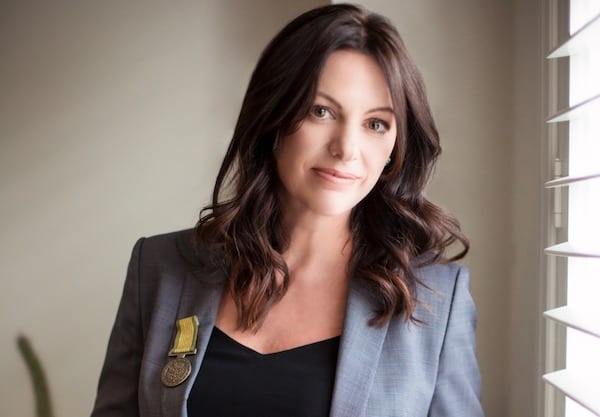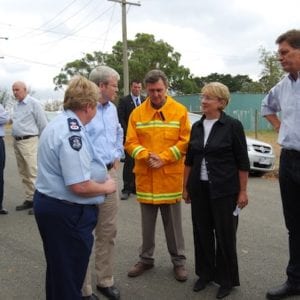As the sun sets a decade on from Australia’s worst natural disaster, the Black Saturday bushfires, I’m reflecting on a day which changed thousands of lives, including my own.
It was an emergency I was deeply ensconced in, working as the Director of Media and Communities for the Emergency Services Commissioner at the time. A time when in a single day 173 people died, 2029 houses were burnt, and countless natural and physical assets were destroyed.
Being part of Black Saturday was so significant in its breadth it’s difficult to reflect on the memories of the days, weeks and months following it in a way that will do justice to the gravity of what happenned.
I remember the deep feeling of dread as the reports of death and loss started coming in. It was hard to know what was rumour, and what was fact at first, there was a sense of shock and disbelief.
Surely it couldn’t be true. Could the worst really have happened?
Listening to the media reports in the afternoon it was clear these fires were out of the ordinary. The media themselves were worried about their colleagues on the ground; and our trusted emergency broadcaster, ABC Radio, was handling a barrage of incoming calls from people stuck in the fires. Listening to them was heartbreaking and terrifying.
In the State Coordination Centre where I stationed myself in the afternoon, the media calls ran off the hook. It was impossible to keep up with demand. There simply weren’t enough phones. Evidence was patchy, rumours were unclear, information was grey, as it always is during the initial stages of disasters, but this time we were facing an event of the magnitude none of us had experienced before.
As night fell I worked closely with the Emergency Services Minister to help position Cabinet around the State for the coming day. Nightfall meant a blanket of darkness covered the intelligence from the ground and we wouldn’t understand the true extent of the damage until daylight. It was critical that government was positioned to get immediate help to those that needed it.
At 1am the Minister confirmed reports of up to 40 people dead on ABC Radio, this was so significant at the time, we had not known numbers this high in decades of collective experience. No one could have fathomed how that number would grow.
On Sunday morning I set out to the fire zones with the Emergency Services Commissioner to support him and the Premier, and to understand the extent of the damage first hand. I watched the Premier weep at the media conference as he spoke about the devastation. Towns had been razed beyond recognition. Visiting Marysville was like nothing I’d seen before. I’d worked on multiple State level emergencies and large record-breaking bushfires for many years prior, but this was like a bomb had gone off. A black eerie silence filled the air. There was not a sound in the sky, not a movement in the trees or the earth, not a single bird chirping in the middle of the bush.
Over the coming days our phones kept ringing 24/7. International media began to descend on the area. I scheduled a daily media conference where all emergency agencies provided updates, ABC broadcast it live, we ran it for 50 days straight. An analysis undertaken later found the fires were covered by 1200 journalists, with 120,000 news articles, and a trillion hits on social media – and that was when social media was in its infancy.
My mobile was so hot I couldn’t hold it up to my head. I had a spare battery charging continuously and swapped them over every few hours, this was crisis communications at its peak. I often couldn’t get through to colleagues on urgent matters because the lines were jammed. For every call I made, two more were on call-waiting. Every time I hung up, it rang again immediately.
Twenty-hour days were the norm in the first week. Each morning I’d wake up and check the count. The number of deaths rose beyond comprehension, the number of houses lost climbed continuously.
One morning I cried uncontrollably. It just couldn’t be real.
Months went past and I barely saw my family or friends, I did my grocery shopping at 7 Eleven because it was across the road from work, and I lived off apples and caffeine. I didn’t mind. I was privileged to be in a role where I could help. Every Victorian wanted to do something, anything, to take away the pain and loss, and help those whose lives had been destroyed.
The Royal Commission began, and the blame game started. It was an excruciating time for anyone who worked for the emergency services. Our best simply hadn’t been enough.
While the commission made their recommendations and much has changed for the better as a result of it, many staff and volunteers have never been the same. The guilt and pain has weighed so heavily on their shoulders, and still does a decade on.
I can truly say that every single person I knew and worked with (and there were hundreds of them) did their absolute best on the day and after. People worked above and beyond normal capacity, through deep emotional distress, always with the community at the forefront of their minds.
Many of us had established relationships with the communities which had now lost everything. We knew individuals who had died, we tried to help friends and strangers on the ground, we worked and worked, endlessly. It was exhausting, emotive and shocking; and it paled in comparison to what those who had lost loved ones, homes or both, were experiencing. My heart still breaks for them.
Much innovation was born, the great gears of government shifted into overdrive to support anything that worked, and slowly we began to recover. Slowly we began to improve the emergency arrangements and planning in the hope that we could avoid a disaster of this nature ever having these impacts again.
Black Saturday affected every one of the ten State Government Departments, and almost every person who worked in them. I was one of the fortunate ones to later be acknowledged formally for my work. A year after the event, I received a National Emergency Medal from the Prime Minister of Australia in a small country hall in Flowerdale. It was one of the communities that had lost almost everything, and the presentation was held there to let that community and others know that they had not been forgotten.
During that time, as I looked out of the car window on the way to the ceremony, tears fell down my cheeks, the bush was still black and barren, and the pain in the community was still all too real.
The bush has recovered now, but we shall never forget the 173 people who died, and their families and friends who have suffered so deeply.
You can read more from Amber at www.amberbrodecky.com


